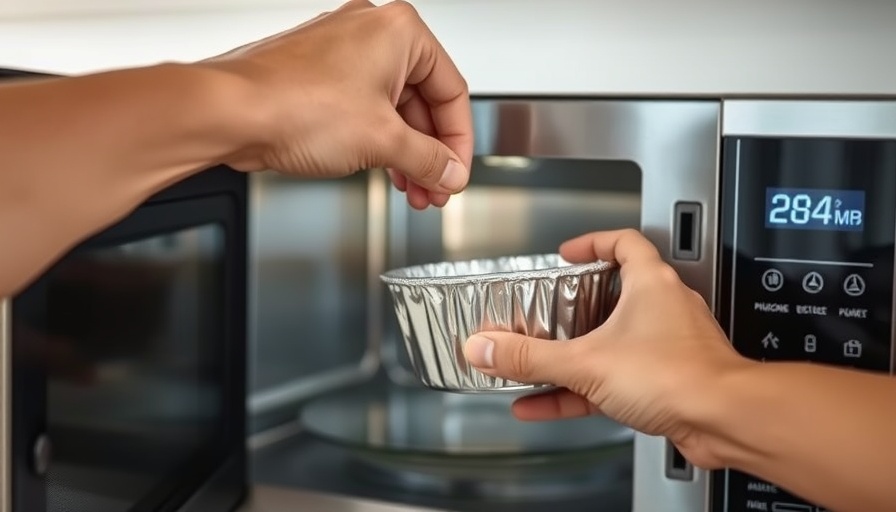
Understanding Microwaves: Why Metal Should Never Be Inside
Picture this: you’re in a rush, heating up leftovers for dinner. You toss a metal spoon into the microwave along with your soup, thinking it’s no big deal. Suddenly, sparks fly, a popping sound erupts, and you quickly realize you’ve made a costly mistake. So why can't you put metal in the microwave? let's break it down.
The Science Behind Microwave Safety
Microwaves work by emitting electromagnetic waves that bounce around inside the appliance, heating up the food by exciting water molecules. Metal objects, however, act as reflectors of these waves, creating a dangerous environment where they can spark and arc. Think of it like shining a flashlight into a mirror—the light simply bounces back. This reflection can build up heat and lead to potential fires within the microwave.
What Happens When Metal Enters the Microwave?
When metal is placed inside a microwave, it can cause numerous problems. Initial signs include faint blue or white sparks, often accompanied by cracking sounds reminiscent of firecrackers. If the metal is not removed quickly, the sparks can escalate into a more serious issue, perhaps damaging the microwave or causing a fire. Appliance repair expert Matthew Morrison suggests immediately stopping the microwave and unplugging it to prevent further damage.
Identifying Microwave-Safe Materials
Not all materials are created equal when it comes to microwave usage. Microwavable dishes are typically made from glass, ceramic, or approved plastics that allow microwave energy to pass through, heating only the food. This includes dishes marked as microwave-safe, which means they don’t absorb or reflect energy improperly. On the contrary, items like Styrofoam can release harmful chemicals and should never be placed in a microwave.
Are There Any Exceptions?
While it's advisable to avoid metal, certain exceptions exist. Some specially designed metal trays can be safely used in microwaves, and the metal racks found inside many microwave models are made from smooth stainless steel that can handle the waves. However, experts warn against using thin metals or those with sharp edges as they can easily cause sparks.
Essential Microwave-Safe Materials You Should Use
Here’s a quick list of materials best suited for microwave cooking:
- Tempered Glass: Perfect for its transparency—allowing you to view your food as it cooks.
- Ceramic and Stoneware: Great for maintaining and distributing heat evenly.
- Specific Plastics: Ensure any plastic is labeled microwave-safe to avoid melting or chemical leaching.
Best Practices for Microwave Use
To maintain a safe and efficient microwave cooking experience, consider common handyman tips. Always double-check for any metal components within food packaging before microwaving. Avoid overcrowding your microwave, and ensure that any dish has enough space to allow for steam accumulation. Finally, be proactive about cleaning your microwave to prevent food particles—especially metallic residues—from becoming a fire hazard.
Conclusion: Stay Safe While Cooking
When it comes to microwave use, understanding the materials is crucial. By sticking to glass, ceramic, and approved plastics, you not only enhance your cooking experience but also safeguard your appliance and household. Remember, when in doubt, keep metal out!
If you want to continue learning about home maintenance and safe DIY projects, be sure to explore additional resources and guides we provide.
 Add Row
Add Row  Add
Add 



Write A Comment